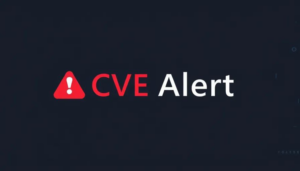CVE Alert: CVE-2013-3893 – n/a – n/a
CVE-2013-3893
Use-after-free vulnerability in the SetMouseCapture implementation in mshtml.dll in Microsoft Internet Explorer 6 through 11 allows remote attackers to execute arbitrary code via crafted JavaScript strings, as demonstrated by use of an ms-help: URL that triggers loading of hxds.dll.
http://jvn.jp/en/jp/JVN27443259/index.html
http://blogs.technet.com/b/srd/archive/2013/10/08/ms13-080-addresses-two-vulnerabilities-under-limited-targeted-attacks.aspx
http://www.securityfocus.com/bid/62453
https://oval.cisecurity.org/repository/search/definition/oval%3Aorg.mitre.oval%3Adef%3A18665
http://www.us-cert.gov/ncas/alerts/TA13-288A
http://technet.microsoft.com/security/advisory/2887505
https://docs.microsoft.com/en-us/security-updates/securitybulletins/2013/ms13-080
http://pastebin.com/raw.php?i=Hx1L5gu6
http://blogs.technet.com/b/srd/archive/2013/09/17/cve-2013-3893-fix-it-workaround-available.aspx
http://packetstormsecurity.com/files/162585/Microsoft-Internet-Explorer-8-SetMouseCapture-Use-After-Free.html
AI Summary Analysis
Risk verdict
High risk with active exploitation; treat as priority 1 due to KEV listing and SSVC exploitation state.
Why this matters
The flaw enables remote code execution via crafted JavaScript strings loaded through a vulnerable rendering path, potentially giving an attacker full control of an affected host after a user interaction. In practice, this can lead to malware installation, credential access, or lateral movement within a network, especially in environments where Internet Explorer components remain enabled.
Most likely attack path
Exploitation requires minimal prerequisites and user interaction: a targeted user visits a page or triggers a link using the ms-help protocol to load malicious content. The attacker can execute code over the network without local privileges, with a low attack complexity and high impact, enabling rapid compromise of the host and potential expansion if trust relationships or credentials are available.
Who is most exposed
Fleets still running Windows with Internet Explorer enabled, particularly older desktop/workstations or environments hosting legacy apps that rely on mshtml.dll, are most at risk. Organisations with limited patching cadence or restricted update practices are more exposed.
Detection ideas
- Unexpected or repeated loads of hxds.dll or mshtml.dll during browser sessions
- Network activity invoking ms-help: URLs or related protocol handlers
- Suspicious process chains: iexplore.exe or mshta.exe spawning abnormal child processes after user interaction
- Memory corruption crashes or anomalous SetMouseCapture events in debugging telemetry
- EDR/AV alerts matching known exploitation patterns or anomalous script execution
Mitigation and prioritisation
- Apply the vendor patch (MS13-080) or equivalent fix immediately; treat as priority 1 due to KEV and exploitation state
- If patching is delayed, disable or tightly constrain the ms-help protocol and reduce scripting-enabled content from untrusted sources
- Enforce reduced attack surface: disable unnecessary IE components, enable Enhanced Protected Mode, ASLR/DEP, and application whitelisting
- Increase monitoring and apply containment controls (network segmentation, strict web filtering, and user education)
- Plan coordinated change-management to validate compatibility before broad rollout
A considerable amount of time and effort goes into maintaining this website, creating backend automation and creating new features and content for you to make actionable intelligence decisions. Everyone that supports the site helps enable new functionality.
If you like the site, please support us on “Patreon” or “Buy Me A Coffee” using the buttons below
To keep up to date follow us on the below channels.


